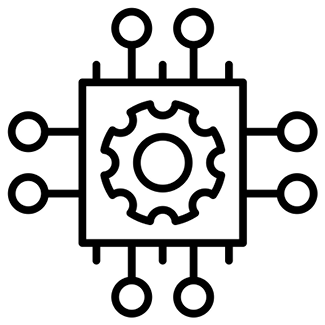Understanding the differences between organizational weaknesses and vulnerabilities is paramount to forming an effective cybersecurity strategy. Weaknesses are generally flaws or deficiencies in a system that can lead to its compromise, while vulnerabilities denote weaknesses in software that outside actors can exploit. Addressing these issues might require patching a piece of software and introducing better security policies, as well as user awareness and training initiatives.
While technical problems are a risk, process-related weaknesses such as inadequate security policies or incident response plans must also be considered. Moreover, human-based vulnerabilities such as employee unawareness can open an organization to social engineering attacks. Organizations must remain committed to understanding and defending against organizational weaknesses and vulnerabilities as the threat landscape changes. Doing so will enable them to build a comprehensive, robust cybersecurity strategy.
Types of organizational weaknesses
Let’s explore the different types of organizational weaknesses. While there might be other ways to categorize them, when looking at organizational weaknesses from a 50,000-foot perspective, it boils down to three categories: technical, process, and human.
|

|
Technical: Software, network, and hardware vulnerabilities can lead to technical weaknesses. Outdated hardware or software (e.g., firmware, operating systems, applications, etc.) that are not patched and secured or systems incorrectly configured can be a major security issue. For example, operating systems running older software versions without the most recent security updates can cause significant problems for computer users and networks. Ensuring all components are up to date with the latest security patches is essential for protecting against technical weaknesses. Additionally, all hardware installations should be securely implemented and network endpoints adequately protected to avoid potential vulnerabilities.
|
|

|
Process: Organizations need adequate security policies and well-defined change management processes. Without which the organizations are left vulnerable to various threats. This could be anything from inadequate backup procedures to an insufficient incident response strategy in the event of a ransomware attack. While organizations must be prepared for such disasters, they need more than just a robust disaster recovery plan; they need to ensure they have the necessary protocols and procedures to respond quickly and effectively to potential incidents.
|
|

|
Human: Humans are prone to mistakes, a fact that can lead to security incidents. This can be due to personnel lacking cybersecurity education, leaving them vulnerable to social engineering techniques such as phishing scams. It is also possible for insiders, whether by malicious intent or accident, to unwittingly cause significant security breaches. To prevent this, organizations must prioritize educating their staff on cybersecurity protocols and strategies and ensuring strict regulations are in place.
|
While these categories help structure our understanding of weaknesses, it’s essential to remember that they often interact. For instance, a technical weakness can be exploited due to a process weakness (such as a lack of patch management) facilitated by a human weakness (perhaps clicking on a phishing link). This interconnectedness makes addressing all weaknesses vital to a comprehensive cybersecurity strategy.
Types of organizational vulnerabilities
Let’s look closer into what types of organizational vulnerabilities exist. Similar to organizational weaknesses, there are many variations. We can categorize them into software, hardware, and network vulnerabilities. Let’s explore these categories and consider practical examples to understand them better.
|

|
Software vulnerabilities: This type of vulnerability allows malicious actors to break into a system and cause harm. To prevent such threats from occurring, it is critical to ensure that all applications are up-to-date with the latest security patches and fixes. As an example, in 2017, the WannaCry ransomware attack exploited a flaw in Microsoft’s Server Message Block protocol that, if not patched, could have allowed an attacker to access the system. WannaCry is suspected to have spread to 150 countries, and the cybercrime caused an estimated $4 billion in losses across the globe.
|
|

|
Hardware vulnerabilities: These are weaknesses in the physical components of a system that can lead to data leakage and theft. In 2018, two major hardware security flaws, Spectre and Meltdown, were discovered to affect modern AMD, Intel, and ARM processors. These vulnerabilities allowed malicious programs to access sensitive information stored in the computer’s processor by exploiting its speculative execution feature. As a result, virtually all devices running on these processors were vulnerable to attacks.
|
|

|
Network vulnerabilities: Vulnerabilities in network architecture and protocols can make systems susceptible to malicious attacks if configurations are left unsecured. For example, a Wi-Fi network that has not been adequately secured with encryption could easily be accessed by attackers, who can intercept traffic and steal confidential information.
|
As security professionals, it is crucial to be aware of the organization’s environment’s vulnerabilities. Knowing how these security flaws can be utilized maliciously is essential in implementing effective defensive techniques. Organizations should prioritize practices such as patching software regularly and ensuring secure configurations when it comes to network settings, as these measures can significantly reduce the chances of an attacker successfully exploiting a vulnerability.
Real-world examples
The global logistics company Maersk experienced a cyberattack in 2017 called NotPetya, triggered by a software vulnerability in their accounting software. This cyberattack resulted in the shutdown of 76 port terminals worldwide, taking Maersk two grueling weeks to restore its systems and costing an estimated $300 million.
Similarly, the 2017 Equifax breach compromised the sensitive data of approximately 147 million consumers when attackers exploited an unpatched Apache Struts web application vulnerability. This incident incurred major reputational damage and legal repercussions, with a whopping $575-million settlement.
The 2020 SolarWinds hack further highlighted the consequences of supply chain weaknesses, as hackers infiltrated SolarWinds’ software development process and inserted a backdoor into an update for over 18,000 customers.
These examples demonstrate that managing organizational weaknesses and vulnerabilities is essential to mitigating damage and avoiding hefty costs. As such, it is crucial to maintain robust security protocols across all digital supply chain points and build an effective cybersecurity framework that promptly identifies, assesses, and remediates any vulnerabilities.
This is an essential lesson for all organizations to remember—the cost of not adequately addressing weaknesses and vulnerabilities can be immense. Organizations must prioritize the development of secure software solutions, protecting their digital supply chain, and mitigating human vulnerabilities to protect themselves from future cyberattacks.
Companies can proactively address security threats by adequately identifying and mitigating organizational weaknesses and vulnerabilities before they become damaging incidents.
Effective vulnerability management is essential for maintaining a strong cybersecurity posture. It enables businesses to identify risks associated with new technologies, keep ahead of emerging threats, and ensure business continuity in today’s increasingly digital world. With proper implementation, organizations can rest assured that their critical assets are safe from malicious actors and prepared to address any security vulnerabilities quickly and efficiently.
Organizations face various vulnerabilities in their systems, which spans across software, hardware, and network vulnerabilities that can be exploited by threat actors. Instances such as the WannaCry ransomware attack, NotPetya, the Spectre and Meltdown hardware flaws, and insecure network configurations underscore the need for robust security measures. The high-profile attacks on Maersk, Equifax, and SolarWinds highlight the potential damage and financial costs of these vulnerabilities. Therefore, it’s crucial for organizations to proactively identify and mitigate these vulnerabilities, maintaining secure software solutions, protecting their digital supply chain, and training their staff to avoid cyberattacks. In doing so, companies can ensure their essential assets are protected and can deal with security threats swiftly and effectively.
Techniques for identifying and assessing weaknesses
Identifying and assessing systems and processes’ weaknesses is integral to maintaining a secure environment. This helps detect possible points of exploitation and inform the development of effective security strategies.
Identification involves finding potential threats that could be exploited by malicious actors, such as outdated software, insecure configurations, insufficient policies, and even human factors such as a lack of awareness about cybersecurity. Assessment involves evaluating the identified risks to understand their impact and likelihood of exploitation, including severity ratings, the probability of exploitation, and the potential consequences.
Various techniques are available for these activities, from security audits and vulnerability assessments to penetration testing and social engineering tests. The method will depend on the organization’s industry, the sensitivity of the data handled, the size of an organization, and the threat landscape.
By regularly identifying and assessing weaknesses within their systems and processes, organizations can effectively detect potential threats while minimizing their impacts if a successful attack occurs. This can help them remain one step ahead of cybercriminals and reduce the chances of a successful attack.
Security audits
Security audits should always be considered as they are essential for assessing and identifying flaws in an organization’s IT protocols, systems, and policies. This is achieved by examining how well existing requirements and criteria are being met within the company.
Internal audits are conducted by a company’s personnel or hired subject matter experts (SMEs) and focus on identifying weaknesses, such as outdated technology, misconfigurations, or non-conformity with internal rules. On the other hand, external audits are conducted by third-party organizations. Audits are often required to adhere to specific regulations such as ISO 27001, which deals with the overall management of information security, or the Payment Card Industry Data Security Standard (PCI DSS). It is important to be aware that government bodies can demand regulatory audits to ensure that regulations such as the Health Insurance Portability and Accountability Act (HIPAA) for healthcare firms or the General Data Protection Regulation (GDPR) for firms that manage European Union (EU) citizens’ information are respected and that organizations are in compliance with them.
Furthermore, depending on the type of the business and its industry scope, additional regulatory compliance based on its geographic location may be applied as well. Hence, organizations define information security policies and standards accordingly to meet their own internal information security requirements as well as the regulatory requirements they are obliged to adhere to.
Security systems and processes require regular check-ups to identify weak points that could be exploited by threat actors. This process includes finding potential risks, such as insufficient security policies or outdated software, and assessing these risks based on their severity and likelihood of exploitation. Regular internal and external security audits are crucial to identify areas of improvement and ensure the organization complies with various regulations. These measures significantly reduce the risk of data breaches, keeping the organization one step ahead of potential threats.
Vulnerability assessments
Vulnerability assessments are critical to any organization’s information security strategy, as they provide an in-depth analysis of weaknesses across their digital estate, including systems, networks, and infrastructure. These assessments can be conducted through automated scanning and manual reviews. Vulnerability management starts with asset discovery, where organizational assets are identified and cataloged. Next, vulnerability scanning is conducted to detect security weaknesses within the system. Following this, a vulnerability assessment is carried out, involving the evaluation and prioritization of the vulnerabilities based on their potential risk. The final step is vulnerability remediation, where solutions are applied to fix or mitigate the detected vulnerabilities, thereby enhancing the security posture of the organization.
Figure 2.1 – Step-by-step vulnerability assessment process
Automated scanning involves running specialized tools, such as commercial software (e.g., Tenable Nessus, Qualys, or Rapid7 Nexpose) or open source products against databases of known vulnerabilities such as the Common Vulnerabilities and Exposures (CVE) list. These tools generate reports with details about the detected vulnerabilities and the recommended remediations.
Manual reviews involve security professionals thoroughly reviewing systems and processes to identify potential weaknesses that automated tools may miss. Due to the automation, additional vetting may be required to perform the next level of risk assessment and false-positive review to minimize the impact on operations. As part of this review, additional inputs from threat intelligence sources, targeted system threat landscapes, and system criticality could enhance the efficiency of the risk assessment process.
Once vulnerabilities are identified, they must be prioritized according to their severity, the sensitivity of the affected system, and the potential impact of a breach. This is an essential step, as it’s important to acknowledge that there will always be vulnerabilities. At the same time, regardless of the organization’s size, we always need to prioritize the workload. This prioritization helps organizations effectively allocate resources to address the most critical vulnerabilities first. By performing regular vulnerability assessments, organizations can keep their security posture up to date and minimize the risk of exploitation by attackers for malicious purposes.
Organizations should ensure their vulnerability assessment program is comprehensive enough to comply with applicable laws and regulations while providing sufficient protection against potential threats. This can involve leveraging specialized tools for automated scanning and engaging qualified personnel for manual reviews as part of a well-rounded approach to security evaluation. When done correctly, vulnerability assessments can go a long way in improving organizational cybersecurity.
By taking the necessary steps to assess and remediate vulnerabilities, organizations can significantly reduce their risk of being exploited by attackers, enhancing their security posture, and staying compliant with applicable regulations.
Vulnerability assessments help organizations identify and fix security weaknesses in their digital estate, which is critical for their cybersecurity strategy. This process involves identifying and cataloging all digital assets, scanning them for any potential vulnerabilities, evaluating these vulnerabilities, and then applying appropriate solutions to resolve them. Both automated tools and manual reviews by security professionals are used, and vulnerabilities are prioritized based on their severity and potential impact. Regular assessments enable organizations to stay updated on their security status and lower the risk of cyberattacks. Essentially, these assessments help organizations strengthen their digital defenses and stay in line with relevant laws and regulations.
Threat modeling
Threat modeling is a proactive approach to security that enables organizations to anticipate and prepare for potential cyberattacks. At its core, through threat identification, analysis, and risk assessment, organizations can determine which threats pose the most significant risks and develop strategies to mitigate them. This approach helps organizations to proactively anticipate and prepare for attacks rather than just reacting to security incidents.
One widely recognized methodology is STRIDE (which stands for Spoofing, Tampering, Repudiation, Information Disclosure, Denial of Service, and Elevation of Privilege), developed by Microsoft. This approach focuses on the types of attacks that could occur and helps organizations develop targeted defense strategies.
|
Threat
|
Desired Security Property
|
|
Spoofing
|
Authentication
|
|
Tampering
|
Integrity
|
|
Repudiation
|
Non-repudiation
|
|
Information disclosure
|
Confidentiality
|
|
Denial of service
|
Availability
|
|
Elevation of privilege
|
Authorization
|
Another model is DREAD (short for Damage Potential, Reproducibility, Exploitability, Affected Users, and Discoverability). This model quantifies each threat’s risk level to prioritize mitigation efforts.
|
Threat
|
Desired Security Property
|
|
Damage
|
How bad would the attack be?
|
|
Reproducibility
|
How easy is it to reproduce attack?
|
|
Exploitability
|
How easy is it to recreate the attack?
|
|
Affected users
|
How many users could be impacted?
|
|
Discoverability
|
How easy is it to discover the attack?
|
The Process for Attack Simulation and Threat Analysis (PASTA) model is a more complete seven-step process combining threat identification and risk assessment.
Figure 2.3 – The seven stages of the PASTA model
The best way for an organization to embrace threat modeling is by creating a proactive security culture. Teams should be encouraged to continuously monitor their systems and look for potential threats, such as new vulnerabilities or malicious actors. This will help organizations stay ahead of the ever-evolving digital threat landscape and better defend against cyberattacks.
Threat modeling helps organizations predict and prepare for potential cyber threats. It involves identifying potential threats, analyzing them, and assessing their risks to design defense strategies. Different models exist for this, such as STRIDE from Microsoft, which outlines types of attacks, DREAD, which scores the risk level of each threat, and PASTA, a comprehensive seven-step process that combines threat identification and risk assessment. To effectively use threat modeling, organizations need to foster a proactive security culture, encouraging teams to constantly monitor their systems for possible threats such as new vulnerabilities or malicious activity. This approach allows organizations to stay on top of the rapidly changing digital threat landscape and defend against cyberattacks more effectively.
Penetration testing
Penetration testing, more commonly known as ‘pen testing,’ is an authorized and proactive method of identifying security vulnerabilities in a system by simulating a cyberattack. Whereas vulnerability assessments are used to identify weaknesses, penetration tests go one step further by actively attempting to exploit these weaknesses to assess the potential damages should there be a breach.
Pen tests can come in many forms, including black-box testing, which mimics an external attacker without any prior knowledge of the system; white-box testing, which replicates an insider attack with a comprehensive understanding of the system; and grey-box testing, which is a combination of the two and provides a balanced approach to detecting potential vulnerabilities.
Once completed, a penetration test wraps up by creating a detailed report outlining all discovered vulnerabilities, the data accessed, and the recommended remediation actions. Tools that are highly popular when carrying out pen tests include Metasploit for developing and executing exploit code against target machines and Burp Suite for web application security tests.
Figure 2.4 – Burp Suite, a tool used for web application security testing
Conducting regular penetration tests provides organizations with validation of their security controls, plus the ability to uncover hidden threats before they become too serious. It is an essential aspect of any strong cybersecurity program and ensures that systems remain resilient from attacks while preparing companies for real-world threats.
Social engineering tests
Social engineering tests are a vital tool for determining the potential vulnerabilities that stem from an organization’s human-centric components. These tests simulate various social engineering attacks to evaluate the extent of employees’ observance of security protocols.
The most common type of test is a phishing simulation, which involves sending malicious emails to employees to assess their ability to recognize and report attacks.
Figure 2.5 – Phishing simulation example
Other social engineering tests include pretexting tests, which occur when an attacker fabricates a false scenario to acquire confidential information or unauthorized access to systems. Impersonating an IT support person who requests a password reset is one example of such a deception.
Tailgating tests examine the effectiveness of physical security measures while also testing employees’ adherence to these principles by attempting entry into restricted areas by following authorized personnel after creating some sort of urgency or relying on politeness.
Baiting tests use malicious devices, such as USB drives, as bait that curious employees may unknowingly plug into a computer and inadvertently install the malware.
The results from social engineering tests are highly beneficial to understanding how humans influence an organization’s security posture. Through these assessments, areas where employees require additional training and awareness can be identified and highlighted, illustrating that strong cybersecurity is not just about technology but also people and their decisions. Such tests further emphasize the need to cultivate a security-first culture within any organization since humans are the weakest link in any cybersecurity defense strategy.
Social engineering tests are essential to any organization’s security system. They play a significant role in determining the weak points of an organization’s human-centric defenses and can help identify areas where further training and awareness are needed. Ultimately, these tests serve as vital tools for uncovering potential vulnerabilities that may arise from human error or negligence.
 United States
United States
 Great Britain
Great Britain
 India
India
 Germany
Germany
 France
France
 Canada
Canada
 Russia
Russia
 Spain
Spain
 Brazil
Brazil
 Australia
Australia
 Singapore
Singapore
 Hungary
Hungary
 Ukraine
Ukraine
 Luxembourg
Luxembourg
 Estonia
Estonia
 Lithuania
Lithuania
 South Korea
South Korea
 Turkey
Turkey
 Switzerland
Switzerland
 Colombia
Colombia
 Taiwan
Taiwan
 Chile
Chile
 Norway
Norway
 Ecuador
Ecuador
 Indonesia
Indonesia
 New Zealand
New Zealand
 Cyprus
Cyprus
 Denmark
Denmark
 Finland
Finland
 Poland
Poland
 Malta
Malta
 Czechia
Czechia
 Austria
Austria
 Sweden
Sweden
 Italy
Italy
 Egypt
Egypt
 Belgium
Belgium
 Portugal
Portugal
 Slovenia
Slovenia
 Ireland
Ireland
 Romania
Romania
 Greece
Greece
 Argentina
Argentina
 Netherlands
Netherlands
 Bulgaria
Bulgaria
 Latvia
Latvia
 South Africa
South Africa
 Malaysia
Malaysia
 Japan
Japan
 Slovakia
Slovakia
 Philippines
Philippines
 Mexico
Mexico
 Thailand
Thailand

















